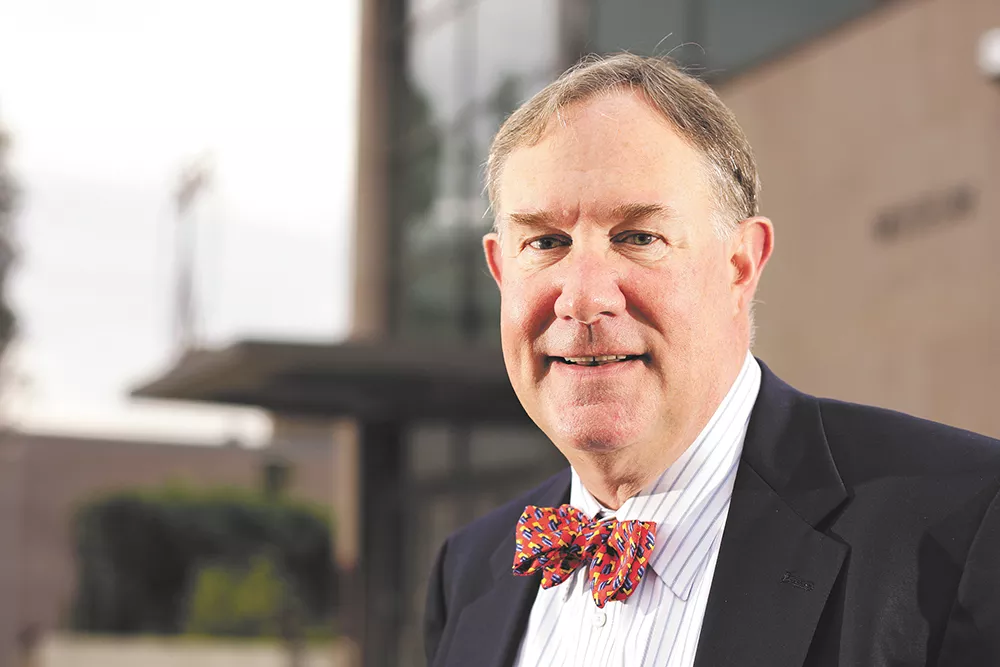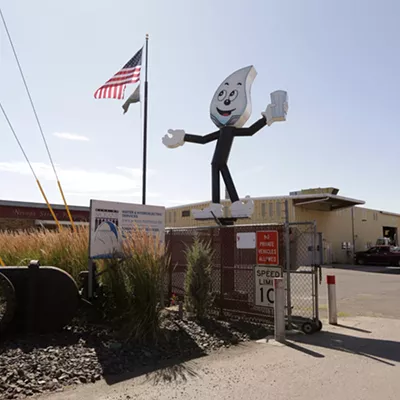The water department thought there was a leak. Water usage had skyrocketed so much in the previous few months at Spokane's Northwest Museum of Arts and Culture, the water department wondered if something had gone wrong.
Nothing had.
Thanks to the "Nature Connects" LEGO exhibit, visitors were drinking from fountains, flushing toilets — in other words, attending the museum like they hadn't in a very long time. In two months, the museum received 40 percent more visitors than it had in all of 2014. This — after years of dismal attendance, state budget cuts, staff resignations and internal turmoil — was something like victory.
And that's when, on Feb. 10, the MAC's board fired the museum's executive director, Forrest Rodgers.
It turns out that two separate external investigations were scrutinizing the MAC last fall.
In October, a whistleblower sent a complaint to the state auditor's office, triggering an investigation. And in November, the board asked a regional state human resources manager to look into a hostile work-environment complaint against Rodgers.
If all this seems eerily familiar, it should. This wasn't the first HR investigation into Rodgers. Nor is it the first time Rodgers has been fired by the museum. And now, just like back in 2012, Rodgers says he has called the office of employment law attorney Bob Dunn, and is thinking about suing.
NOW AND THEN
Back in 2012, Rodgers' termination sparked an inferno of public outrage, including an Internet petition, a heated public forum and letters to the editor. Community pressure, combined with Rodgers' lawsuit, resulted in him being rehired.
But today, public outcry is largely absent. Some of the most visible protesters against Rodgers' firing in 2012 haven't rallied to support him.
MAC board president Toni Pessemier has responded to community questions over Rodgers' firing by saying it's a "personnel matter," without elaborating.
Four years ago, the board had been deeply divided over Rodgers' firing. This time, Pessemier said, the vote was 10 to 0, with one absent. (Absent board member Elizabeth Kelley resigned on Monday, writing that she wouldn't have voted to terminate Rodgers.)
Until recently, the MAC had continued to struggle under Rodgers' tenure.
"Our attendance is unacceptably low," Rodgers told the Inlander in August 2013. Over the next two years, attendance remained dismal. Rodgers intentionally avoided bringing in any out-of-town blockbuster exhibits, hoping to rely on programs based on the local "100 Stories" exhibit to drive attendance.
"Those were not sufficiently developed and delivered," Rodgers says. With staff overwhelmed and state funding uncertain, Rodgers says the MAC instead took the time to reassess.
In late November 2014, Rodgers and the board hired John Moredo-Burich as the director of museum experience. Moredo-Burich says that when he arrived, educational programming and museum marketing were virtually nonexistent. Not only had the main exhibit not been changed in more than a year, he says, there were no major upcoming exhibits scheduled at all.
"Most cultural centers are booked five to eight years in advance," Moredo-Burich says.
Getting the LEGO exhibit installed at the MAC in less than a year, he says, meant calling in favors with old industry contacts.
By the time he started dismantling "100 Stories" in October, however, the MAC was hit with another challenge. An employee whistleblower had contacted the state auditor's office, accusing the museum of "improper governmental actions," which can include violating state law, gross mismanagement or gross waste of public resources.
Multiple investigators from state auditor's office visited the MAC, interviewing staff members and gathering documents. "We learned about many of the policies that the museum had been following for decades that violated state rules and regulations," Rodgers says.
The MAC won't know the specifics of the whistleblower complaint until the investigation concludes. Moredo-Burich says that could take as long as until next October.
PERSONNEL PROBLEMS
In the meantime, a different investigation scrutinized Rodgers himself.
Richard Bruce, a graphic designer and museum assistant and an employee of the Kalispel Tribe, lodged a complaint about Rodgers with the board. In response, the board asked Lois Bergstrom, a regional human resources manager at the Washington State Department of Corrections, to investigate the issue.
At press time, Bruce had not returned phone calls from the Inlander and a records request for the investigation had not been filled.
Rodgers says the complaint claimed he was "creating a hostile work environment and ... was retaliating and intimidating."
Rodgers admits there was a rift between Bruce and the museum, but refuses to take the blame. "He refused to meet with me," Rodgers says. "I can't be intimidating if I'm not talking with him and he's not talking with me."
To try to get Bruce to talk, Rodgers says, he changed the lock on Bruce's office door, and appended a note saying, "You want the key, come talk to me."
Ultimately, Rodgers says, the investigation concluded that issues between staff members needed to be resolved. "The agreement was that he would participate along with me and three other staff in a mediation to identify the issues and find the solution," Rodgers says.
Again, this echoes the past. In 2013, the state launched an extensive investigation into allegations of gender discrimination and retaliation by Rodgers. The investigator cleared the executive director of the primary accusations, but identified serious staff discontent, concluding he had likely had "significant and detrimental impact on the MAC."
Despite this, the board stood unanimously beside him and celebrated his business plan.
This time, however, it isn't just the "hostile work environment" complaint the board had concerns about. In January, the board sent letters and memos to Rodgers identifying concerns about his work plan, the museum budget and how he responded to instructions from the board.
Rodgers says he had a response to the budget memo prepared on the day he was fired. But he was too busy working on a state capital budget request, he says, to respond to the board's demand for a reformatted work plan, or several other board complaints.
"I did not respond to the two-and-a-half page memo criticizing me for the fact a member-preview postcard was mailed late," he says. He suspects that the spate of recent board memos to him were designed to lay out a case for his termination.
LEADERSHIP STRUGGLE
In January, Pessemier and Rodgers presented a united front to the Inlander, celebrating state funding for a "predesign," a thorough analysis of the physical and financial structures of the museum in order to ensure its future.
Today, by contrast, Rodgers says he disagreed significantly over the board's view of the predesign and condemns the board for overstepping its authority. After five board members resigned in May, Rodgers says, the board has attempted to "govern by memo," directing the director specifically instead of guiding through general policy.
"That's a violation of the delegation of day-to-day authority to the chief executive of the museum," he says.
Pessemier says the board has sought to clearly answer Rodgers' questions about his role and the board's.
"We felt it was important to have clear communication with him and communicated regularly," she says. "We consistently consulted the attorney general's office to confirm the appropriate processes."
In fact, Pessemier says, during the same board meeting when they fired Rodgers, they voted to adopt his predesign recommendations.
As the MAC enters its 100th year, it's looking forward. Moredo-Burich — now the interim director — can rattle off all the reasons to be excited about the MAC's present and future, from the current "Treasures" exhibit to Nez Perce artifacts to an upcoming ancient Egypt show.
Rodgers, for his part, can point to successes he's brought to the museum, from opening on Sundays to providing digital access to the photo archives. But as he pursues litigation, Rodgers' traditional optimism about the MAC sounds absent.
"The board talks about recruiting a new executive director," Rodgers says. "What museum professional is going to look at an institution like this, that has — especially within the museum community — a reputation?"
He answers only with slow shrug of his shoulders. ♦


























